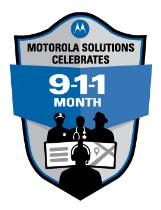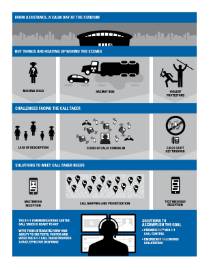
April is 9-1-1 Education Month. Throughout the month this blog series will highlight different aspects of the emergency response process, including what happens when you text or call 9-1-1, and will pay tribute to the men and women behind the phones. This April, take some time to learn something new about America’s emergency response system.
Being 9-1-1 month, April is the perfect time to talk about the changes going on in Public Safety Answering Points (PSAPs) and call centers around the country. Next Generation 9-1-1 (NG9-1-1) encompases a vast array of changes, but text to 9-1-1 is dominating the conversation. How does it work? Where is it being adopted? How can agencies bring it to their community easily and efficiently?
Some call takers have concerns regarding this transition. For example, if a child goes missing in the middle of a sports game – during which call traffic is already higher than usual – call centers worry they will be deluged by calls and texts. The challenge becomes how to maintain focus while accelerating answer rates. Call takers need to be able to retrieve the child’s description, while managing the flood of calls. Fortunately this issue has not really come to fruition and early adopters of text to 9-1-1 have been underwhelmed by the volume of texts they received, even after significant external promotion of the availability of text to 9-1-1.
 While many of the concerns are valid, none should cause a PSAP to delay their acceptance of “calls” for help via SMS/text or multimedia. Many solutions are now available to help call takers handle calls with speed and accuracy while simplifying data input. This type of solution can make an impact by providing an exact description to call takers which responders can use to locate the missing child before panic turns into havoc. Fast, effective emergency response is what citizens deserve, regardless of the call volume or other challenges facing a 9-1-1 center. Having information in an integrated view streamlines management, and simplifies the transition.
While many of the concerns are valid, none should cause a PSAP to delay their acceptance of “calls” for help via SMS/text or multimedia. Many solutions are now available to help call takers handle calls with speed and accuracy while simplifying data input. This type of solution can make an impact by providing an exact description to call takers which responders can use to locate the missing child before panic turns into havoc. Fast, effective emergency response is what citizens deserve, regardless of the call volume or other challenges facing a 9-1-1 center. Having information in an integrated view streamlines management, and simplifies the transition.
On April 20 Motorola Solutions and the National Emergency Number Association (NENA) had the honor of hearing from two agencies who are on the forefront of bringing this change to their communities. Karl Fasold, Director of Technology at Orleans Parish Communication District (OPCD) and Darryl Maggard, 9-1-1 Coordinator at Muskogee County, Oklahoma addressed some of the issues their agencies addressed when upgrading to an NG9-1-1 solution, and how an integrated workflow helped mitigate their teams’ concerns.
Watch the webinar on-demand here and click the infographic to the right to learn more about NG9-1-1.



